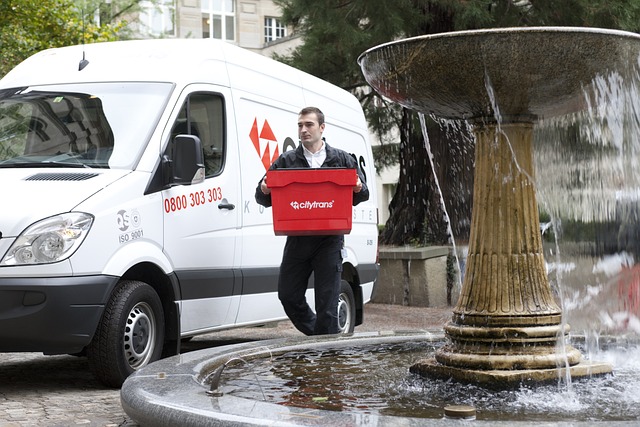When you’re running field service operations, every second counts. Your customers expect efficient, reliable service, and you need a team that can deliver that with precision. However, managing a roster of field service personnel and complex logistics can be daunting. This blog post is going to share practical tips that can turbocharge your team’s productivity and elevate customer satisfaction. Get ready to transform the way you manage your operations and give your business the edge it needs to stand out in a competitive market.
Invest in Technology
Advancements in technology have significantly altered the landscape of these operations. Utilizing field service software like advanced scheduling tools can optimize routing, reducing time spent on the road and decreasing fuel costs. GPS tracking increases the transparency of field operations, allowing managers to monitor service progress in real-time and enabling swift redirection in response to unforeseen circumstances, thus avoiding service delays. Mobile technology empowers field agents to access customer data, technical manuals, and inventory information instantly, fostering more effective and informed interactions with clients.
Furthermore, the adoption of IoT (Internet of Things) sensors in equipment can lead to predictive maintenance, identifying potential malfunctions before they lead to service interruptions. For example, sensors in a boiler can alert the service team of an impending failure, and this pre-emptive action can prevent costly repairs and maintain customer satisfaction. Implementing such technologies not only enhances efficiency but also significantly boosts customer satisfaction by ensuring quicker, more accurate service responses. In this competitive era, the integration of cutting-edge digital tools into field service operations is not merely an option—it’s a cornerstone for success in providing exemplary service and achieving operational excellence.
Train Your Staff
Equipping your staff with the proper training is a fundamental component of bolstering your field service operations. Comprehensive training programs enable technicians to confidently handle a diverse range of service scenarios, ensuring they are adept at using the latest tools and technologies and are fully aware of the latest industry standards and protocols. When service agents are trained effectively, they exhibit increased proficiency and make fewer errors in the field, thus lowering the rate of return visits and warranty claims. This not only improves operational efficiency but also enhances the customer experience by providing solutions that meet their needs the first time around.
Additionally, training fosters a sense of empowerment among field service personnel. Empowered employees take ownership of customer issues, demonstrate improved job satisfaction, and become proactive in identifying opportunities for service improvement. Also, investing in continuous education and development creates a skilled workforce that is prepared to adapt to new challenges, making your business more agile and better positioned to react to changes in the market or technology. Ultimately, staff training translates into a more robust service delivery model that is customer-oriented, cost-efficient, and resilient.
Define Clear Objectives
When running a business that offers field services, you must have some objectives and expectations about how things should go for the team out there. These can be used as guidelines for the whole company so that everyone is on the same page. Objectives should include things like the following:
- Increase first-time fix rate
- Reduce response time
- Improve customer satisfaction scores
- Optimize technician utilization
- Enhance technician training and skills
- Increase revenue from service contracts
- Reduce downtime and service interruptions
- Improve inventory management
- Enhance collaboration
- Ensure regulatory compliance
- Increase operational efficiency
- Monitor and improve KPIs
Clear objectives create a unified framework within which employees can align their efforts, ensuring all team actions contribute purposefully toward overarching business goals. When objectives are lucid and measurable, such as reducing response times or improving first-time fix rates, managers can more effectively allocate resources, guide employee training, and streamline processes to meet these targets.
Moreover, objectives facilitate better decision-making as they furnish a benchmark against which the impact of those decisions can be evaluated. Regular monitoring helps in quickly identifying areas that require attention or adjustment, keeping the operations agile and responsive to challenges. Ultimately, clear objectives catalyze continual growth and advancement, as they pave the way for setting more ambitious goals, fostering a culture of excellence, and maintaining competitive advantage in the fast-paced field service industry.
Optimize Scheduling
By carefully coordinating service appointments and engineers’ routes, businesses can significantly reduce downtime and increase the number of assignments completed per day. Smart scheduling tools can factor in variables such as traffic conditions, job duration estimates, and technician expertise to create dynamic itineraries that minimize travel time and ensure the right person is assigned to the right task.
Further, efficient scheduling allows for better workload distribution among technicians, preventing burnout while maximizing their productivity. This elevation in workforce utilization leads to more timely service deliveries, which is a critical factor in enhancing customer satisfaction. With customers increasingly expecting speedy resolutions to their service requests, a streamlined schedule directly contributes to meeting these expectations, fostering loyalty, and potentially generating positive word-of-mouth. In addition, better scheduling practices can contribute to the reduction of overtime costs and unnecessary fuel expenditure, thus optimizing operational costs.
By leveraging advanced scheduling software, service operations can adapt in real-time to unexpected changes such as job cancellations or emergency tasks, thereby maintaining a fluid and resilient service chain. In essence, optimized scheduling lies at the heart of impactful resource management, customer satisfaction, and ultimately, the profitability of field service operations.
Focus on Preventive Maintenance
Scheduling regular check-ups and maintenance activities for equipment before faults occur can dramatically reduce the likelihood of unexpected breakdowns. This approach leads to a direct decrease in downtime for customers, as well-kept machinery is less prone to failure, ensuring that services remain uninterrupted and reliable.
What’s more, proactive maintenance optimizes the lifespan and performance of equipment, which translates into cost savings by mitigating the need for expensive emergency repairs or full replacements. This also reduces the strain on field service technicians who might otherwise face an overwhelming number of emergency calls. With equipment kept in optimum condition, the frequency of these distress calls diminishes, allowing technicians to focus on scheduled work without the disruption of urgent issues.
Another benefit is the improved allocation of resources; since preventive maintenance can be planned during less busy periods, it allows for more effective scheduling. It also contributes to better inventory management since the need for parts can be anticipated and ordered in advance, avoiding the last-minute rush that often leads to delays and additional expenses. By adopting preventive maintenance policies, companies pave the way for more predictable and manageable service operations, strengthening customer trust and loyalty through consistent, high-quality service delivery.
Utilizing field service software like advanced scheduling tools can optimize routing, reducing time spent on the road and decreasing fuel costs. For instance, incorporating an HVAC field service toolkit can streamline diagnostics and repairs for HVAC systems, making field service operations more efficient and responsive.
Enhance Inventory Management
Ensuring that the right parts are available at the right time will trim down delays in service delivery. It streamlines the repair and maintenance process by allowing field technicians to have immediate access to the necessary parts and tools, thus improving the first-time fix rate and reducing the need for return visits.
Moreover, by minimizing excess stock and preventing part obsolescence, companies can avoid unnecessary inventory expenses. Implementing a reliable inventory tracking system also helps in forecasting future demand, making it possible to purchase parts in optimal quantities and at better prices.
Additionally, proper inventory control contributes to better customer relations. It demonstrates to customers that the company is well-organized and capable of handling their service needs expediently. A reliable and robust inventory management system is indispensable for any field service operation aiming to enhance performance and maintain a competitive edge.
Streamline Billing and Invoicing
When billing is efficient and accurate, it reduces the turnaround time for payment, thus improving cash flow. Automated invoicing systems can generate bills promptly upon job completion, cutting down on administrative work and potential errors associated with manual entry. Moreover, customers are more likely to be satisfied with a service that provides transparent and timely billing, which can increase the likelihood of repeat business.
Integrating mobile payment solutions allows technicians to process payments on-site, which further accelerates the billing cycle and reduces the chances of billing disputes. This immediacy means that services rendered are quickly accounted for, ensuring financial records are always up-to-date. Such enhancements in the billing process not only improve operational efficiency by freeing up resources to focus on core service tasks but also provide data that can be analyzed for insights into service performance, aiding in strategic decisions. Robust billing systems fortify the link between service excellence and financial health, driving the growth of field service operations.
Improve Communication
With clear, open channels of communication, businesses can significantly enhance coordination between dispatchers, technicians, and customers. This improved interaction leads to an increased understanding of customer needs and expectations, enabling field technicians to deliver more personalized and timely solutions. For dispatchers, being able to swiftly convey schedule changes or additional customer information means technicians are better prepared for each job, leading to a higher first-time fix rate and fewer return visits.
In the field, technicians equipped with real-time communication tools can report back instantly on job status, escalating issues without delay for rapid resolution, and ensuring continuity of service. Additionally, transparent communication builds trust with clients, as they feel informed and involved throughout the service process. This transparency results in higher customer satisfaction and loyalty, as clients appreciate being kept in the loop, especially when unexpected complications arise. Ultimately, improved communication streamlines business operations, reduces errors and inefficiencies, and fosters a harmonious workflow that propels the overall performance of field service operations.
Monitor Performance Metrics
This systematic tracking allows managers to capture quantitative data reflecting various aspects of service delivery. With these insights, pinpointing areas of excellence and identifying avenues for improvement becomes an evidence-based process, leading to informed decision-making. Performance metrics can cover diverse dimensions — from job completion times and first-time fix rates to customer satisfaction scores and incident frequencies. By constantly evaluating these metrics against set goals and industry benchmarks, a company can initiate data-driven corrective actions, ensuring operations align with defined standards and objectives.
Moreover, performance metrics provide visibility into the effectiveness of training initiatives and the impact of new tools or processes. This feedback loop fosters a culture of continuous improvement, encouraging innovation and adaptive strategies. For instance, if a spike in repeat repair visits is detected, it may indicate the need for enhanced technician training or a revision of diagnostic procedures. As a result, comprehensive metric monitoring not only streamlines operations and optimizes resource deployment but also elevates the customer experience, solidifying a company’s reputation for reliability and quality in its field service operations.
Implement Customer Feedback Mechanisms
Understanding your customer’s needs and wishes is crucial for optimizing service delivery. Feedback mechanisms provide valuable insights into customer satisfaction rates and highlight areas for improvement. These could be the following:
- Surveys
- Net promoter score surveys
- Online reviews and ratings
- Social media monitoring
- Feedback forms on the website/app
- Customer feedback hotline
- Focus group
- Customer advisory boards
- One-on-one interviews
- Email feedback requests
- In-app feedback tools
- Post-interaction surveys
- Comment cards
- Text message surveys
- Comment cards
- Interactive voice response surveys
This feedback is the cornerstone for measuring service satisfaction and identifying service gaps. By leveraging such mechanisms, companies can gain a clearer understanding of customer priorities and pain points, enabling them to adapt services to better meet client expectations.
It fosters a responsive, customer-centric approach that not only improves individual service experiences but also guides strategic improvements and innovation in service offerings. Essentially, it turns customer opinions into actionable data, driving continuous improvement and competitive advantage in field service operations.
Continuously Improve
Continuous improvement enhances efficiency and effectiveness with every iteration. The principle of continuous improvement lies at the heart of operational excellence, encouraging a systematic approach to identify and implement incremental changes that lead to significant enhancements over time. This can manifest in various ways, such as refining technician training programs, upgrading technology to streamline service delivery, or adopting new strategies for inventory management.
By adopting a culture where improvement is ongoing, organizations ensure that their service offerings evolve in lockstep with changes in customer expectations and technological advancements. For instance, small enhancements in scheduling and dispatch can lead to reduced wait times for customers, fostering greater satisfaction and loyalty. Similarly, continuous reevaluation and enhancement of maintenance procedures can prevent equipment failures before they occur, thereby averting downtime and strengthening client trust.
Image by Marcel Gnauk from Pixabay
By embracing these strategies, you’re poised to elevate your field service operations to new heights. Continuously monitoring your performance, implementing customer feedback, and pursuing relentless improvement will set the stage for service excellence. Remember, the goal is to not just meet but exceed customer expectations, ensuring they turn to you for reliable, high-quality service time and time again.
Your relentless dedication to optimizing every facet of your operations — from scheduling and maintenance to inventory management and billing — will pay dividends in customer loyalty and operational efficiency. So keep pushing the boundaries, stay responsive to your clients, and watch as your field service operations become a benchmark for success in your industry.







